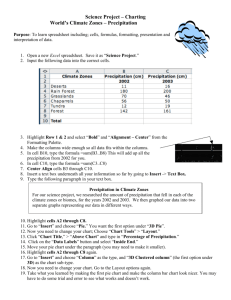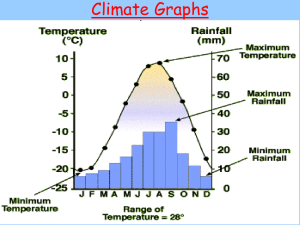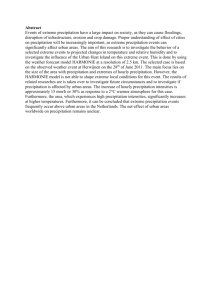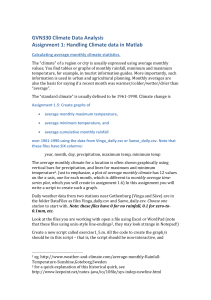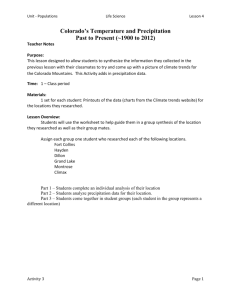Lesson #9: Weather and Climate - Center for Learning in Action
advertisement
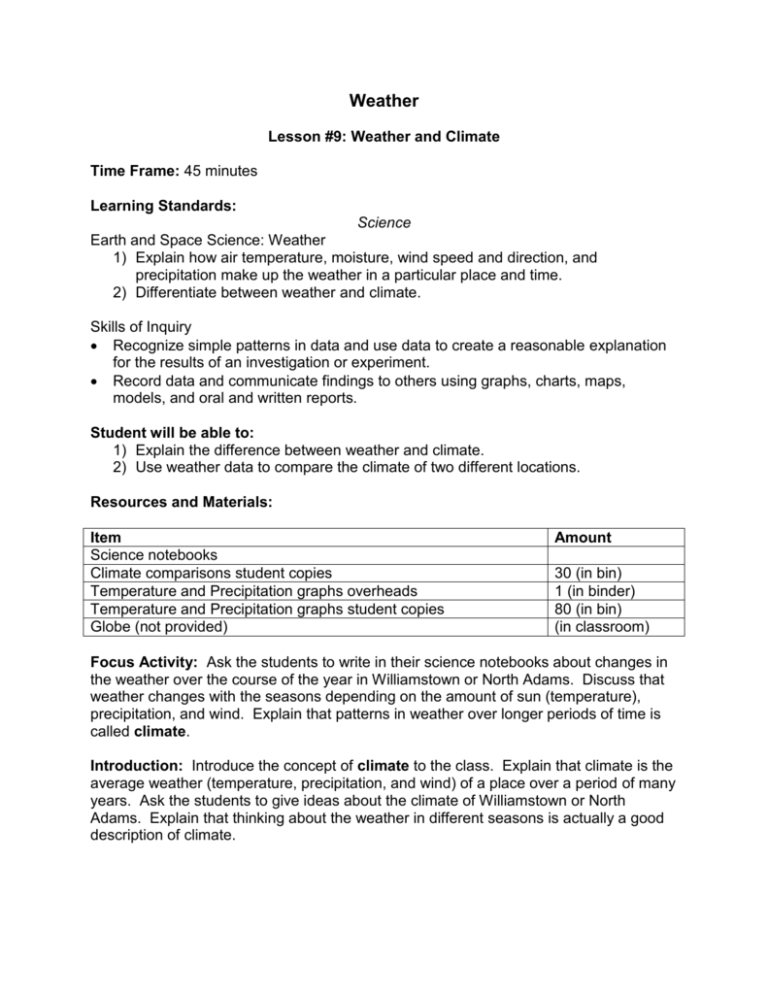
Weather Lesson #9: Weather and Climate Time Frame: 45 minutes Learning Standards: Science Earth and Space Science: Weather 1) Explain how air temperature, moisture, wind speed and direction, and precipitation make up the weather in a particular place and time. 2) Differentiate between weather and climate. Skills of Inquiry Recognize simple patterns in data and use data to create a reasonable explanation for the results of an investigation or experiment. Record data and communicate findings to others using graphs, charts, maps, models, and oral and written reports. Student will be able to: 1) Explain the difference between weather and climate. 2) Use weather data to compare the climate of two different locations. Resources and Materials: Item Science notebooks Climate comparisons student copies Temperature and Precipitation graphs overheads Temperature and Precipitation graphs student copies Globe (not provided) Amount 30 (in bin) 1 (in binder) 80 (in bin) (in classroom) Focus Activity: Ask the students to write in their science notebooks about changes in the weather over the course of the year in Williamstown or North Adams. Discuss that weather changes with the seasons depending on the amount of sun (temperature), precipitation, and wind. Explain that patterns in weather over longer periods of time is called climate. Introduction: Introduce the concept of climate to the class. Explain that climate is the average weather (temperature, precipitation, and wind) of a place over a period of many years. Ask the students to give ideas about the climate of Williamstown or North Adams. Explain that thinking about the weather in different seasons is actually a good description of climate. Activity: 1) Pass out the climate comparison sheets to the class (temperature and precipitation) and place the climate comparison sheet for temperature on the overhead. Discuss that you can use tables of data to make comparisons, and explain how tables are created. Explain that daily weather measurements are taken for many years and then averaged. Climate data can help predict which months might be colder or warmed and which locations on the earth might be colder or warmer. Ask students to think about why these different locations might be colder or warmer. Use a globe to discuss why locations nearer to the equator are warmer. Discuss the precipitation data as well. 2) Ask the students to make bar graphs with the temperature and precipitation data from each of the three locations. Demonstrate how to make a bar graph, using the graph overheads provided, if necessary. The bar graphs should provide a good visual for the differences in climate. Assist students as necessary to complete the graph. If needed, do a review of how to make a bar graph with the class before giving the students time to work individually. Closure: Discuss the following questions with the class. What is weather? What is climate? How is the climate of Williamstown/North Adams different from the climate of Florida? From Alaska? Why is the climate different? Assessment: Science notebook responses, participation in class activities and discussions, completion of the climate comparisons
